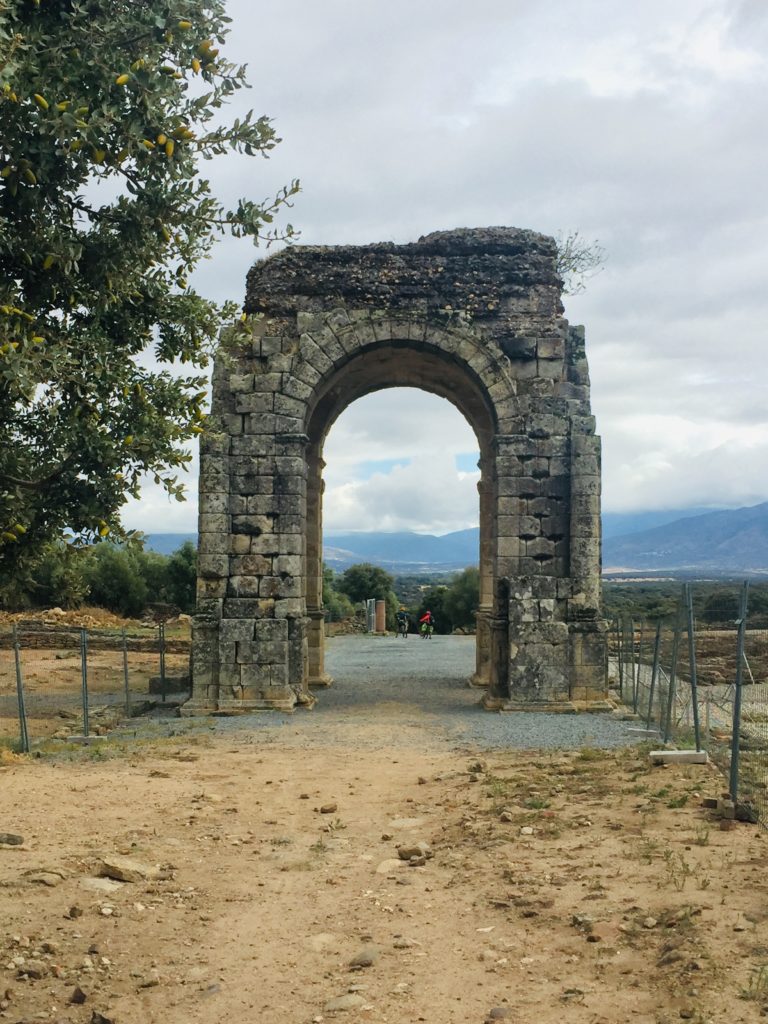
Sunbaked landscapes, Roman ruins, scrub forests, snakes, bush fires, cows eating trees, and days of splendid isolation. Only in Extremadura. This is perhaps the least known of all Spain’s regions. It has no coastline to draw the tourists, no world famous pulsating metropolises, and no football team to rival the Barcelonas or Real Madrids of this world. Few have heard of this place, let alone visited. Of those who have heard, few dare to come. And of those who do, who would be crazy enough to traverse its length on foot? I was one of the few who came to Extremadura to walk. Having heard terrifying tales of this forbidding land I approached it with fear and trepidation. Starvation, isolation, sunstroke, exposure, or rabid animals; I simply hoped that in my time there I would not have to endure some terrible life limiting experience that would at best scar me or at worst kill me. But if you keep an open mind, life will often turn around and surprise you.
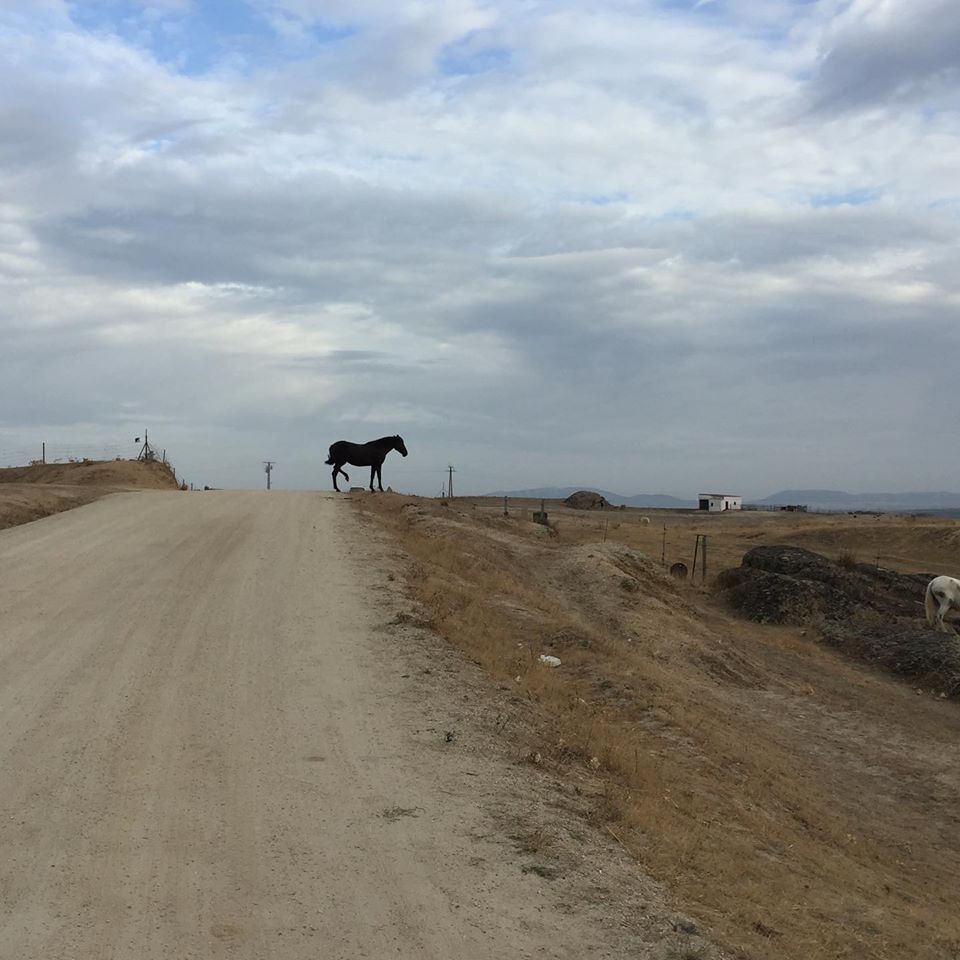
The camino, like life, presents an unending stream of potential problems, most of which are negotiated quite smoothly. The worst case scenario rarely comes to pass, and the horrors you anticipate often turn out to be quite illusory or unreal. I expected Extremadura was going to be a land of challenges, and indeed it was. I had to push myself harder and further in these parts than I had ever done before. But it also turned out to be a land of beauty, rich history and heavenly walking conditions. Here was a place where you could confront your fears, test your limits and emerge stronger on the other side. As long as I remembered the old cliche that it was the journey and not the destination that mattered, and each step was as important as any other, I’d be just fine.
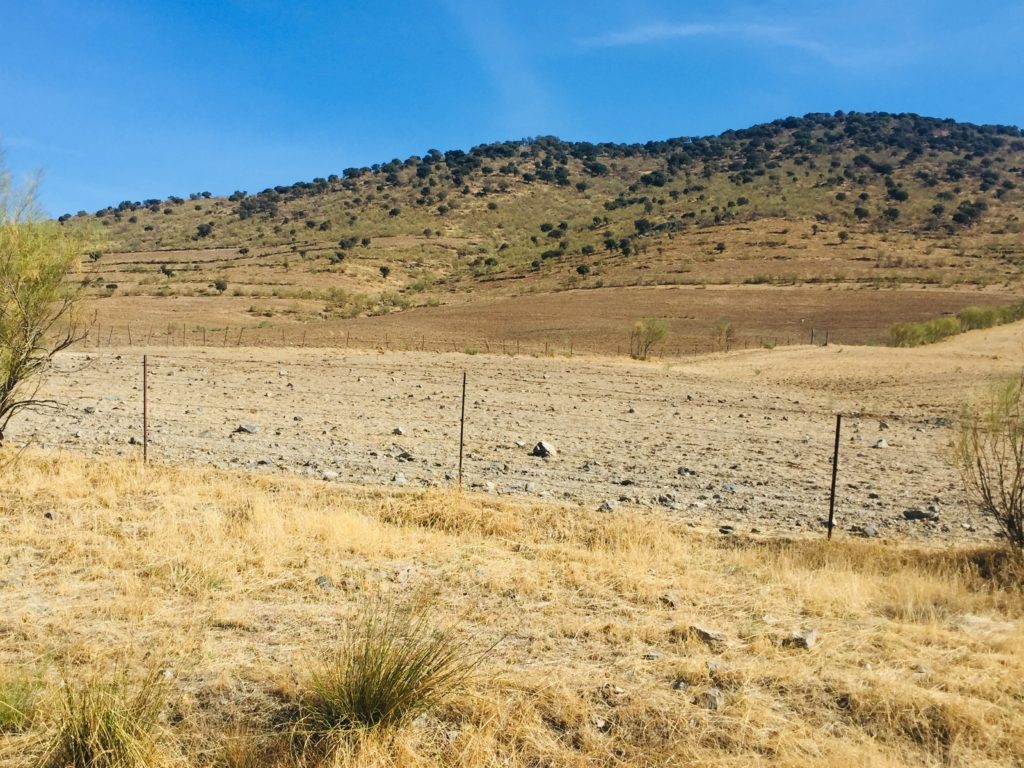
At first, Extramadura’s harsh and barren terrain is evident. The scorched earth that is abundant in autumn, following months of pulsating sunshine, stretches to all points on the horizon. Boney, raggedy animals, scrawny bushes and cork oak trees are about all that populate the landscape. The bollards in this region pointing the way to Santiago are designed to emphasise Extremadura’s Roman past, with the gateway at Capara, an old Roman town in the north of the province, being the emblem of this portion of the camino. It feels like a very empty part of the world, something that’s quite rare in modern Europe, yet these conditions are absolutely perfect for a pilgrimage. If you want to find a land where solitude and the quiet whisperings of nature are your primary companions along your journey of discovery, Extremadura is the place to go.
Urban life is often notable for its conspicuous absence, and walking in these parts requires a bit more planning than it does on other caminos. The first stopping point is Monasterio, a town named after a monastery which is a long journey away, and where, unsurprisingly, you can’t get a meal before 9pm. Next comes a pretty little village with the inviting name Fuente de Cantos, translating as fountain of songs. The paved streets and whitewashed houses would make this a very appealing stopping point for the evening but the public albergue had been closed when I was there so I had to amble on a few kilometres further to Caladilla de los Barros. This was another village pleasing to the eye, but conspicuously short of life or activity.
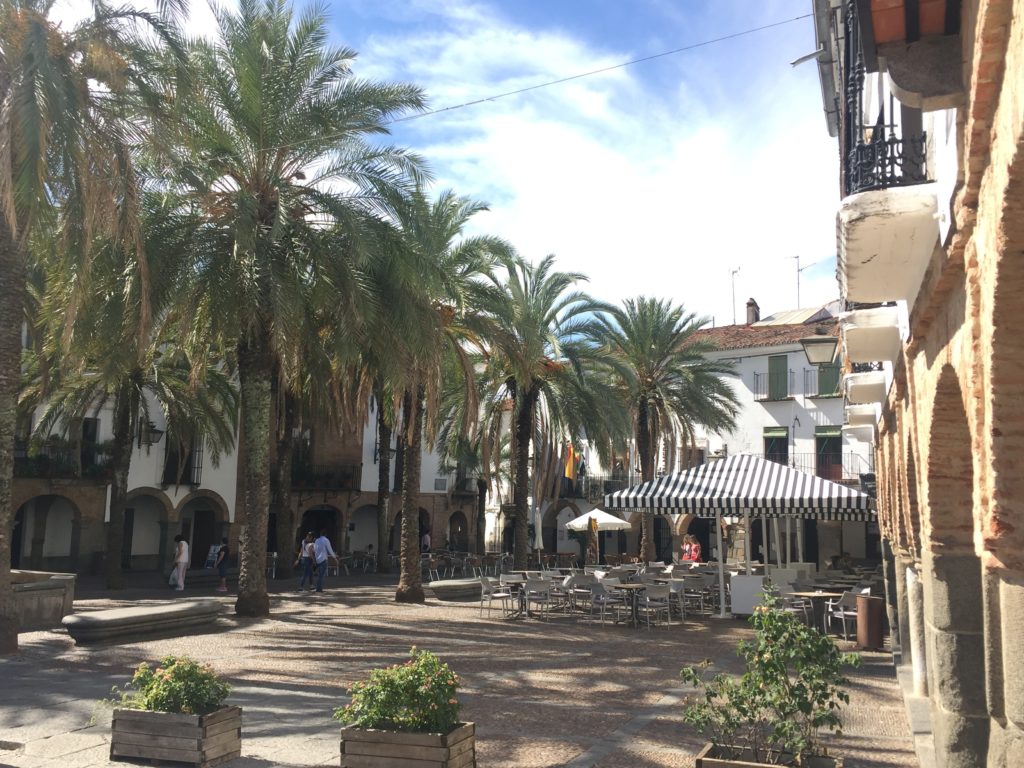
The bustling town of Zafra, with its intriguing array of narrow streets and busy plazas, is known as the little Seville, and it is without question the most metropolitan spot since the Andalucian capital, but good luck trying to find food on a Saturday night, especially when a bullfight is on. I wandered past the bullring as I sought vainly for my dinner. I could hear the triumphant trumpet playing and cheering of the crowd from outside, and then I passed a service entrance where I was confronted by a sea of blood from the last fight. Such a disgusting sight would normally put me off my dinner, but on that evening it only made me hungrier. At that point I would almost have been willing to don a toreador’s hat and fight the bull myself to satisfy my hunger.
Further on down the road from Zafra is the town of Villafranca de los Barros, known locally as the city of music. I arrived there on a Sunday, when sleepy Spain goes into an irreversible coma. I’m not sure why it’s called the city of music but the only music I heard were the atonal growlings of my stomach as I desperately searched for an open shop. Empty streets and shuttered buildings were becoming an increasingly familiar and all too eerie experience along the Via de la Plata. The towns’ inhabitants must have got advanced warning of the Coronavirus pandemic, as it seemed as if everyone was cocooning.
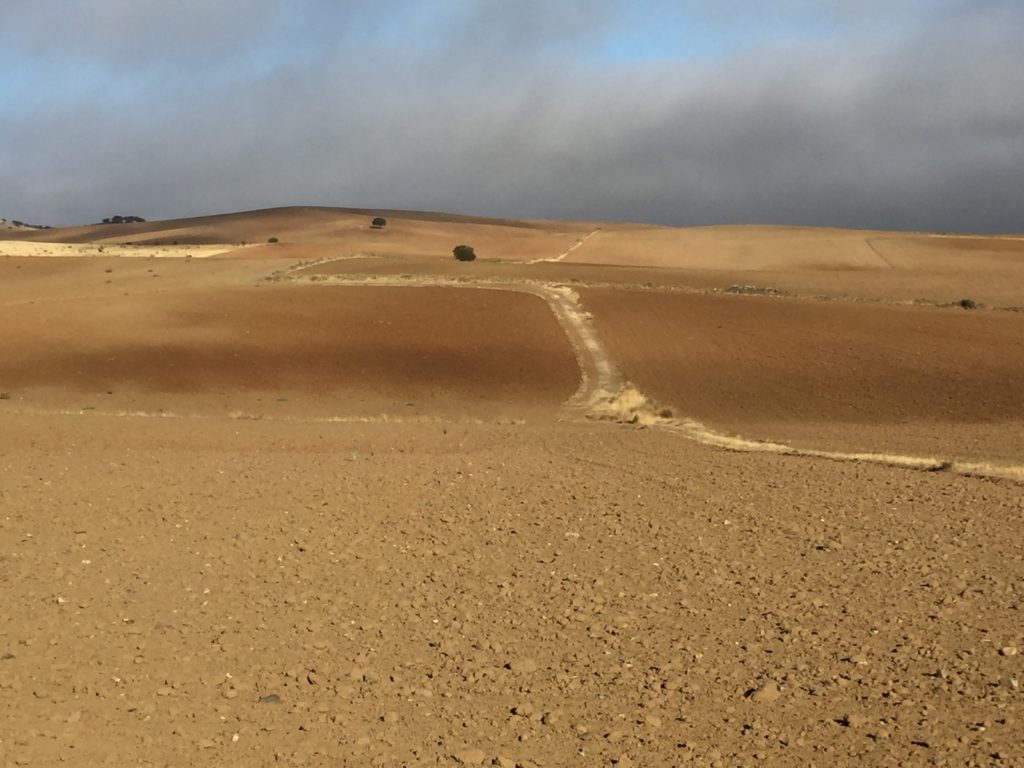
Cocooning, of course, was not the issue. Declining population numbers and outward migration were more likely. Prosperity had not stopped to visit these lands. The towns and villages were well maintained and picturesque, but this was no country for young people. All along the Via de la Plata were signs that the modern world had little interest in the villages that dotted the vast expanse of agricultural lands. The small towns didn’t have large enough populations to support many businesses. Of those who remained there were few people under fifty, while many were over seventy. Could these places survive another generation? One of the most abundant signs on buildings was ‘Se Vende’, or ‘For Sale’. But who was going to buy them? And what would they used for? The popularity of the Camino Francés had breathed new life into the little hamlets along that route in the north of Spain, and the increase in the number of new businesses between 2004, when I first walked it, and 2013, when I did it again, was evident. The Via de la Plata doesn’t attract anything like the numbers on the Francés, and finding supplies already requires a bit of hunting. If the towns and villages with their sparse facilities along this route were to disappear, could the Via de la Plata be much further behind?
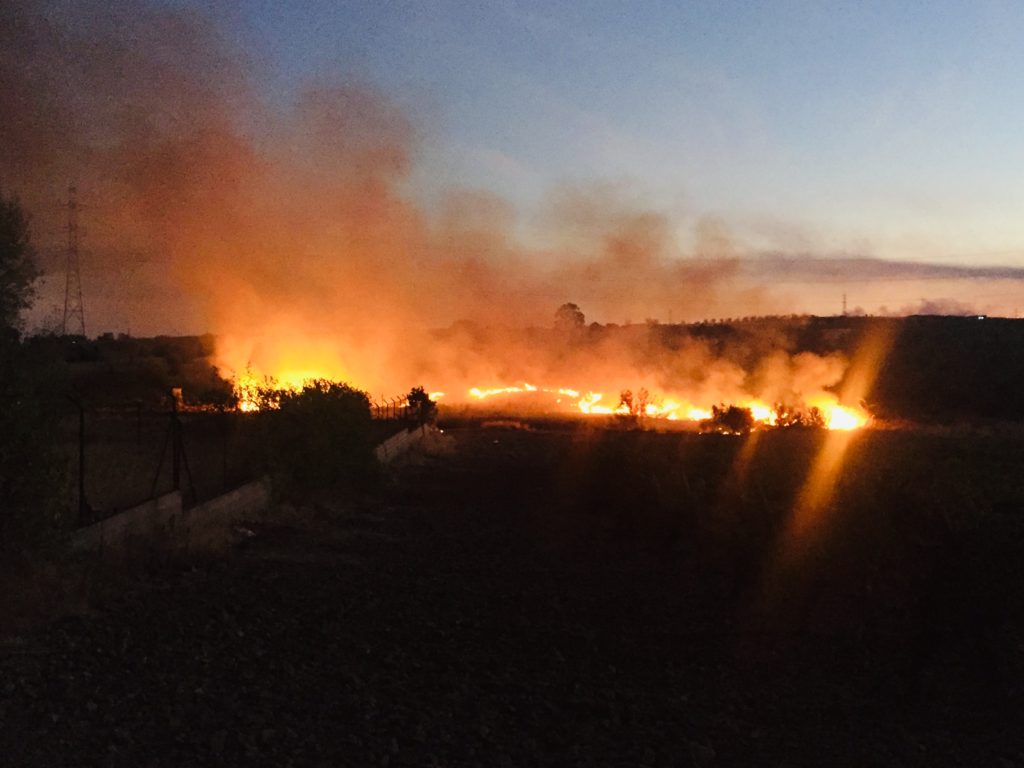
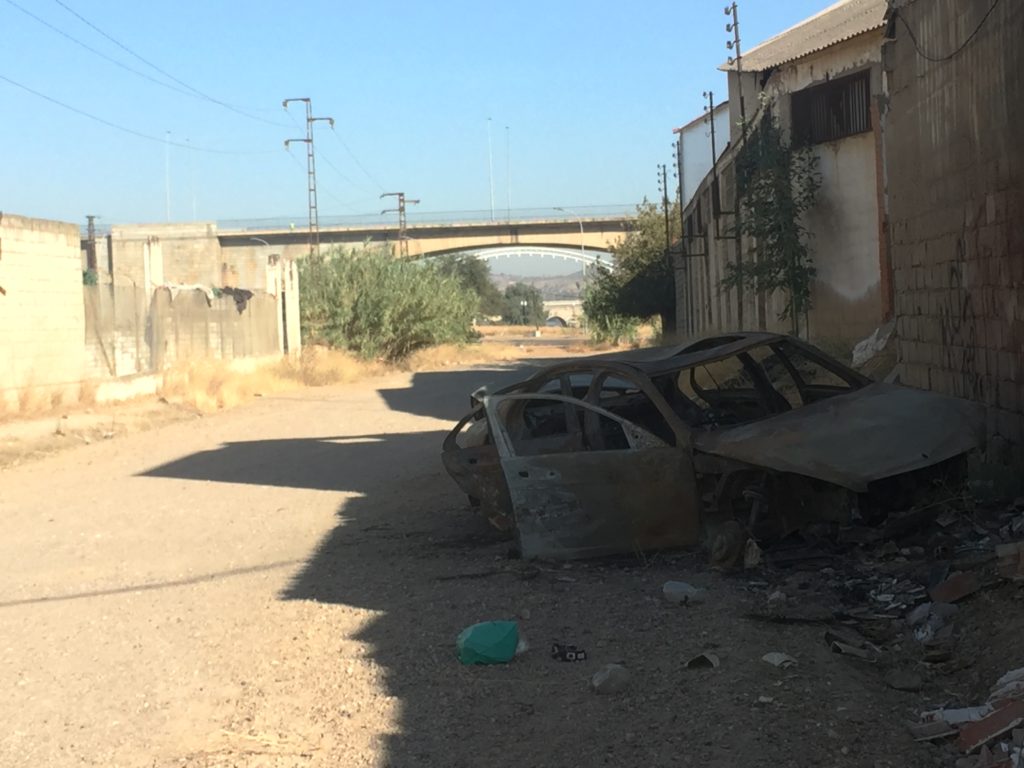
Survival is the name of the game in Extremadura, for inhabitants and visitors alike, and the pilgrim’s life mirrors that of a soldier’s. We both sleep in spartan communal barracks, we get up early in the mornings, suit up, strap our equipment onto our backs, and then march for hours on end, often in very unfavourable conditions. And we do this repeatedly, because it is our duty to do so. Generally, no one is trying to kill pilgrims on the road to Santiago, but on the approach to Merida, one of the largest cities in Extremadura, I thought I’d been landed into a war zone. Bush fires blazed in the agricultural hinterland, and after I passed the industrial detritus that occupies the outskirts of most Spanish cities I had to navigate a lane full of burnt out cars and vandalised abandoned buildings to get to my destination. Had there been gunfire and the presence of a liberating army of US troops I might have been in Baghdad.
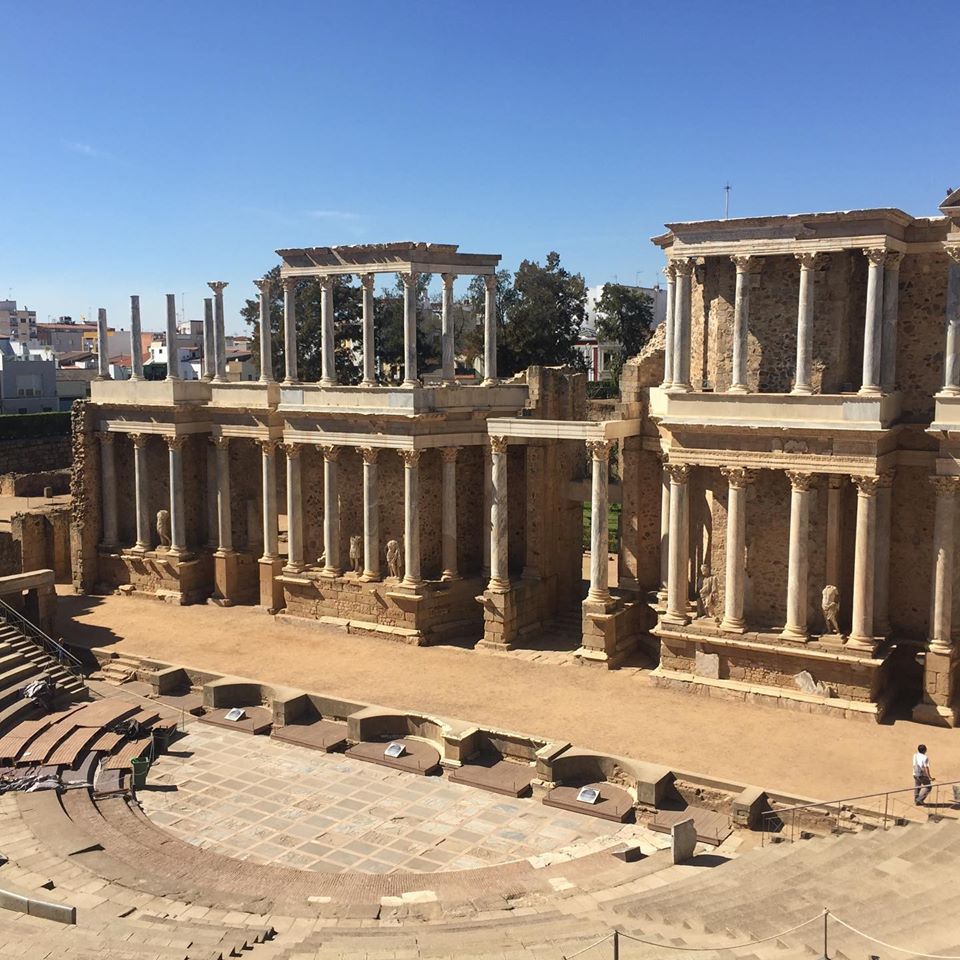
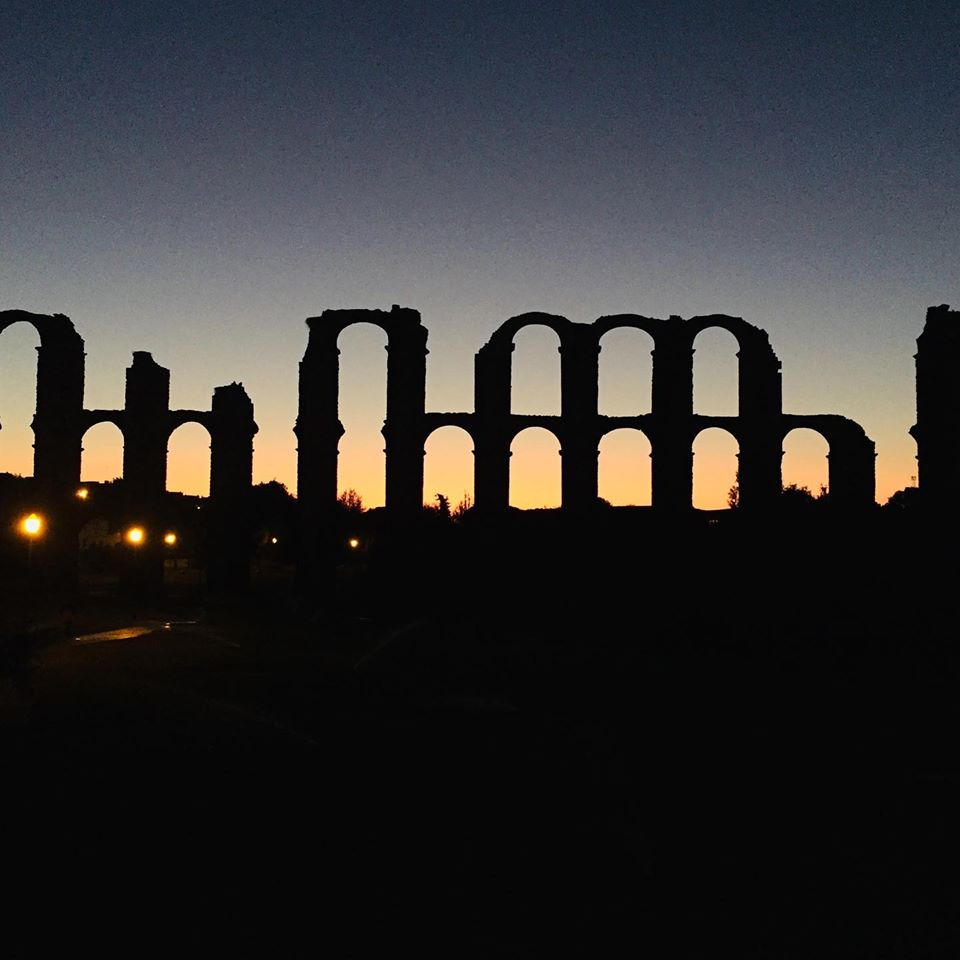
Merida is the largest city on the route since Seville. Its history stretches back to Roman times, and it boasts a remarkably well preserved amphitheatre, circus, forum and aqueduct among other antiquities. It looks so Roman you’d almost expect to find the city’s founder, Augustus Caesar, in a local cafe enjoying a beer and some tapas. After days in the tranquil wilderness Merida was a cosmopolitan tonic for the soul, in spite of the bombed out approach to the city. On reaching it I had completed a my first 200 KM but a certain amount of fatigue was starting to kick in. The next day I had an appetising 34 KM to complete, so I wasn’t afforded the opportunity to indulge any feelings of tiredness or self pity. A pilgrim always faces the path in front of them with acceptance and willingness. Like a soldier, you’re on a mission and it is your duty to complete this mission irrespective of personal feelings. I marched on.
Three days later, having walked through some of the most remote yet beautiful stretches of woodland, where a mischievous donkey tried to eat my walking sticks, I reached Cáceres. This city was a UNESCO world heritage site, whose walled town contains the influences of the Romans, Moors, Jews and Christians, all of whom have left a lasting legacy on the Iberian peninsula. It’s another one of many idyllic Spanish cities that are packed full of historical curios. It has an inviting air that tempts one to relax here a little while longer and cast off the demands of the camino for a day or two.
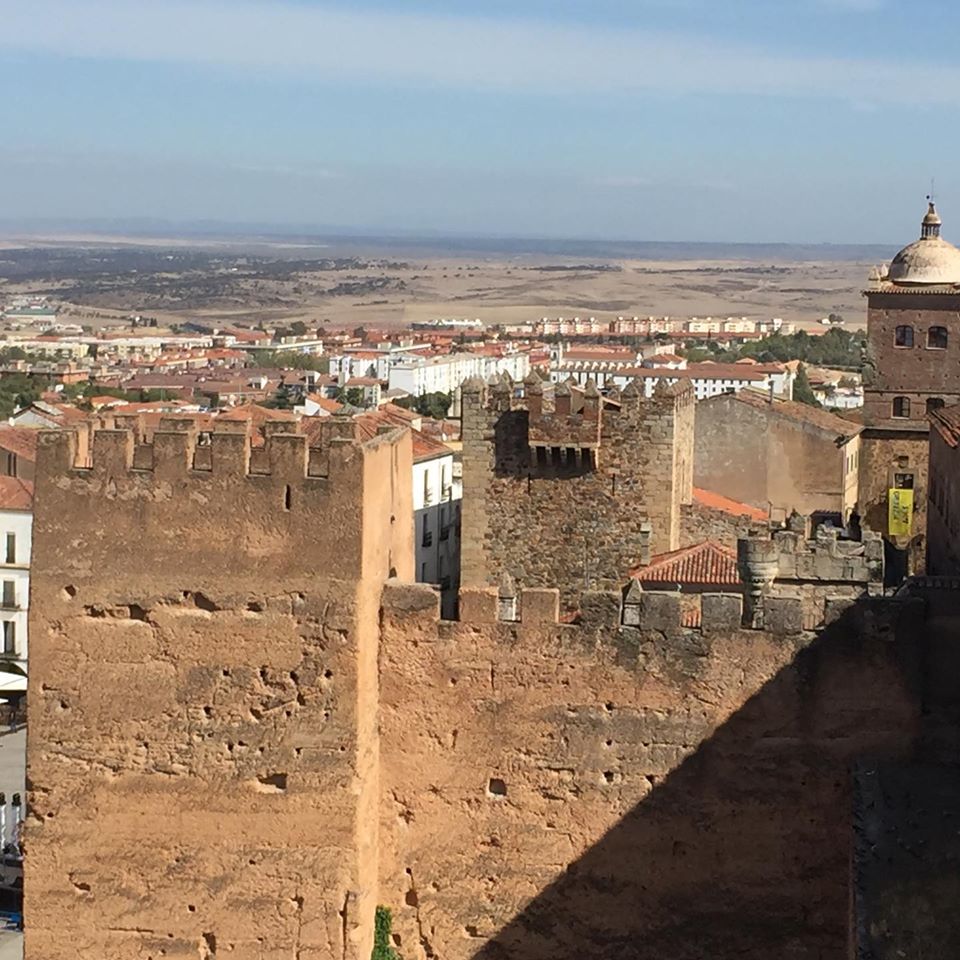
Cáceres was day 12 of my journey, and I was a little over a quarter of the way to Santiago. It still felt like I hadn’t put a dent in the journey, but all that was about to change. I stayed in a private hostel in the city, where I was put in an upstairs dorm so that I, as a scruffy pilgrim, wouldn’t come in to contact with the more respectable tourists who were also staying on the premises. I seemed to have to place to myself and was getting ready for bed at around 9:30 PM when another pilgrim arrived in the room. This was my introduction to Paul, an eccentric German guy and hardened camino veteran who would happily walk 60 KM a day if the mood caught him. We exchanged introductions and swapped a few war stories. Then he asked me where I was heading the next day. I said I was planning on going to Emblase de Alcantara, a little over 30 KM away. There were lodgings in that area next to a reservoir. It sounded very pleasant, but the accommodation also had a tendency to close quite unexpectedly. According to Paul, this was a weekend when it was shut to pilgrims. My alternatives were to go 10 KM or 40 KM. Paul suggested I could take a bus for the first 10 KM. I looked at him with contempt and reminded him that the first commandment of any true pilgrim is “THOU SHALT NOT TAKE THE BUS”. He smiled and said “Good answer.” He too knew that the only right way to do the camino was to walk every step. 40 KM the next day it would be.
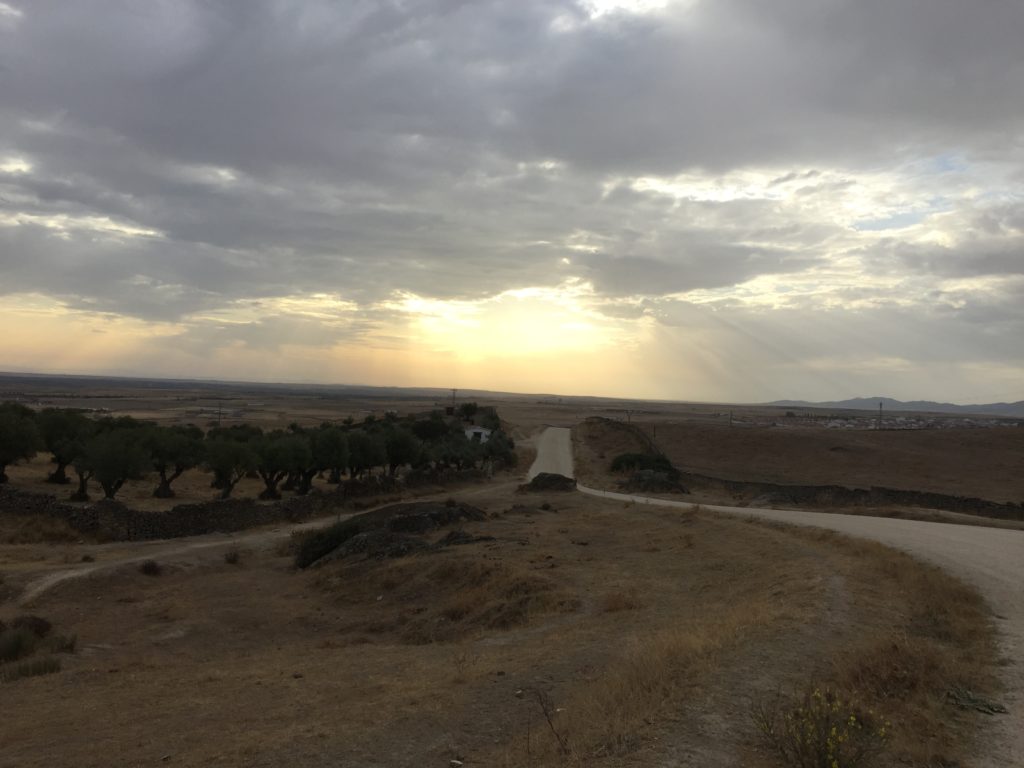
There comes a point on every camino when you have to do something you have never done before, and push yourself far beyond the limits of what you think are physically possible for you to do. This would be one of those times. I don’t believe I had ever walked a full 40 KM in one day before. I had done 37 or 38, but never the magic 40. Today would be the day when I would break that barrier. The lands beyond Cacéras are lonely and bleak. The occasional cow, horse or sheep is the only sign of life along these paths, but the vast emptiness of these lands are also hauntingly peaceful and meditative. Though I didn’t see a soul for hours on end, I was emboldened by the memories of the colourful characters I had already met on this path. There was a very engaging retired couple from California called Tony and Janell, who had tragically lost their house in one of the many wildfires to sweep that state. I met them on the first day, but lost them on the second. There was a younger American guy called Max, who travelled with an old fashioned wooden backpack and who brought a guitar which he would play as he strolled through the Spanish countryside. There was a Hungarian woman who performed opera in town squares to earn a few Euros for her dinner, and then there was an Italian couple, where the woman said nothing and the man constantly complained about the price of everything. Extremadura was among the cheapest places in Europe, but even he managed to find prices to moan about. There was no pleasing some people.
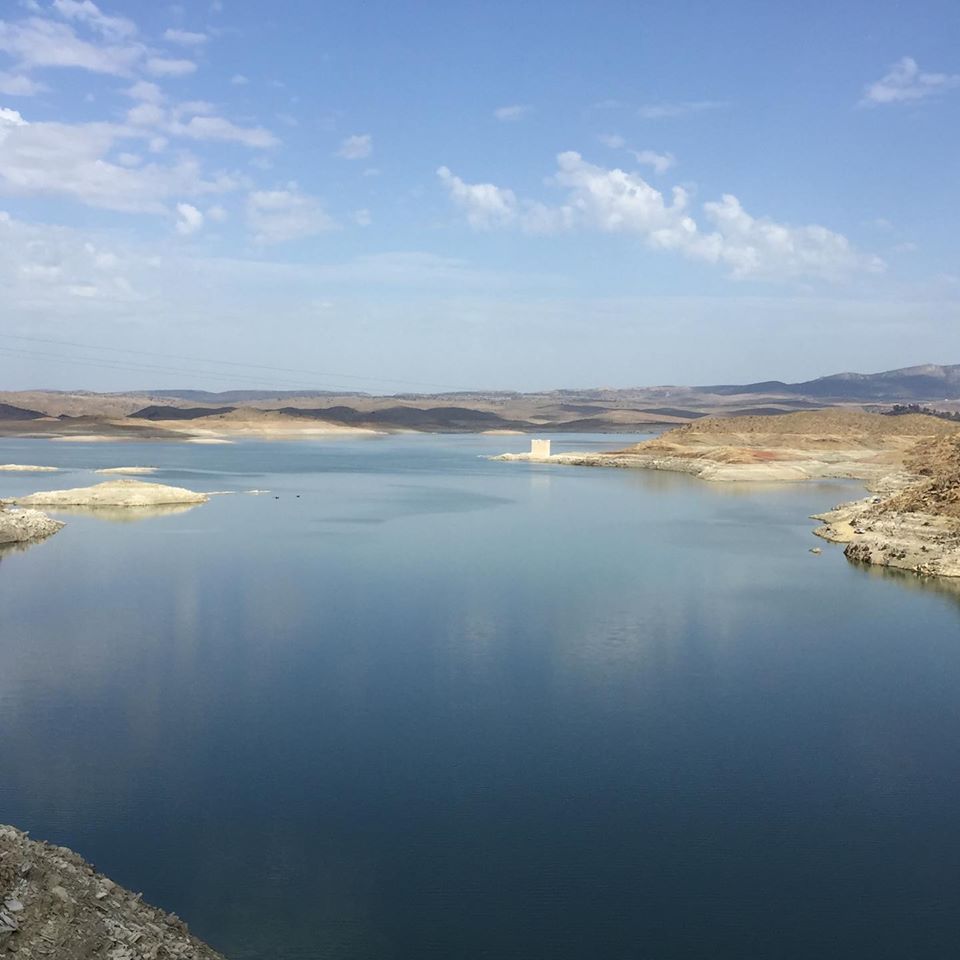
The scorched dusty lands through which I had comtemplatively walked that morning suddenly gave way to an expansive reservoir at Alcantara. Formed by damming the Rio Tagus, along whose banks I had walked the early portion of the Caminho Portuguese in 2015, it was the second largest reservoir in Europe, and an inviting oasis in the desert. I perched myself down at a roadside overlooking the water to have lunch. I needed to replenish my energy levels as I still had a considerable distance to go, and eating my hearty lunch of stale bread, warm cheese, rubbery chorizo, soggy lettuce leaves, and melted chocolate, all washed down with tepid water, lightened the load of my backpack by a few kilos for the remainder of the day’s journey. The inviting deep blue waters in front were every bit as refreshing as my meagre rations. Desert and scrublands can provide a peaceful backdrop for a journey of the soul, but there is rarely anything so uplifting as walking by water.
Canaveral was today’s destination, now that the albergue at the dam was closed. It was about a further 10 KM. Having eaten I felt pretty good. The sun was shining, but not too much, and as I had psychologically committed to walking 40 KM I wasn’t expecting any problems for the remainder of my journey. After about an hour I saw a town appear in the distance. Given the low population density in these parts I felt safe in assuming this was Canaveral. I needed an extra energy kick, so I put on some light hard rock and pounded on down the road towards my destination. The more I walked, however, the less progress I seemed to be making. The town wasn’t coming any nearer to me. At first it was ahead, then it was on my left hand side and then it seemed to be slowly passing behind. Had I missed the turn, or was I simply lost? I didn’t recall seeing a yellow arrow for a while, and I was now running low on water. Such a scenario gives rises to a dilemma that needs an immediate answer: do I keep on going and hopefully find the right way, or do I assume that I have gone the wrong way and turn around, only to later discover I was on the right track and have to double back? I kept on going and hoped I would get to safety. I didn’t know where the energy was coming from, I was in the early stages of dehydration and delirium, but my body kept on going. Whatever survival instincts I had were starting to kick in. The camino hadn’t killed me up to that point, and this was not a good day to die.
I kept on walking in the same direction, and some time later I reached an industrial estate. At last I found signs of life, but no one about. It was the 12th of October, a national holiday in Spain and hence another reason for all businesses to be closed. There weren’t any arrows but I instinctively sensed which direction I was supposed to go, and took my chances. I knew that if I could get water I would sort out any other problems. The camino always gives you what you need, and at the end of the estate I reached a water fountain. This may well have been supplied by the Alcantara reservoir I had passed earlier. If it was, the reservoir would have lost its status as the second biggest in Europe by the time I had finished drinking. Now that I was hydrated, I had enough fuel to make it to Canaveral. When I finally reached the town I approached it from the wrong side. Somewhere along the way I had in fact missed the turn and according to the albergue owner I had probably walked another 5 or 6 KM. That brought my day’s total to around 47 or 48 KM. By the time I found somewhere to eat that evening, it must have reached at least 50 KM.
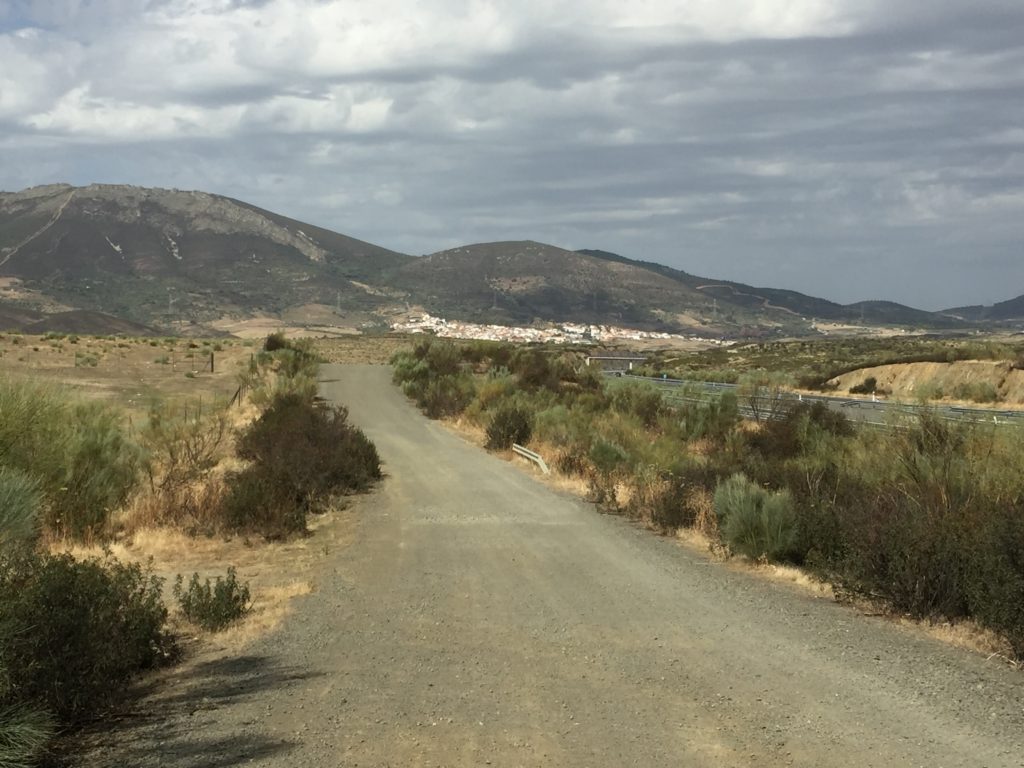
It may have been the longest walking day of all my caminos, but I felt damn good because of it. My greatest fear on the Via de la Plata is that I wouldn’t be able to complete it. Now I knew I had it in me to face any obstacle along that road and overcome it. There are also moments on the camino when you know you’ve reached the right place and found the right people. That happened for me in Canaveral. Paul, the crazy German, was also in the same albergue, and Max, the guy with the wooden backpack, appeared as well. I hadn’t seen him for several days, but some folks keep turning up. Added into the mix was an American man called Dan, and another Daniel, from Israel. We all quickly struck up a friendship and the two Daniels turned out to be great travelling companions. There was a pervasive feeling of respect among the pilgrims in the albergue that evening. We’d all completed an insanely long day, we did it tenaciously, and we were all ready to go again the next day. The word Extremadura may have meant extra hard, and it certainly was, but that was the reason we had all come there. The Via de la Plata may have been one of the ultimate camino challenges, but we all showed we were up to the task.
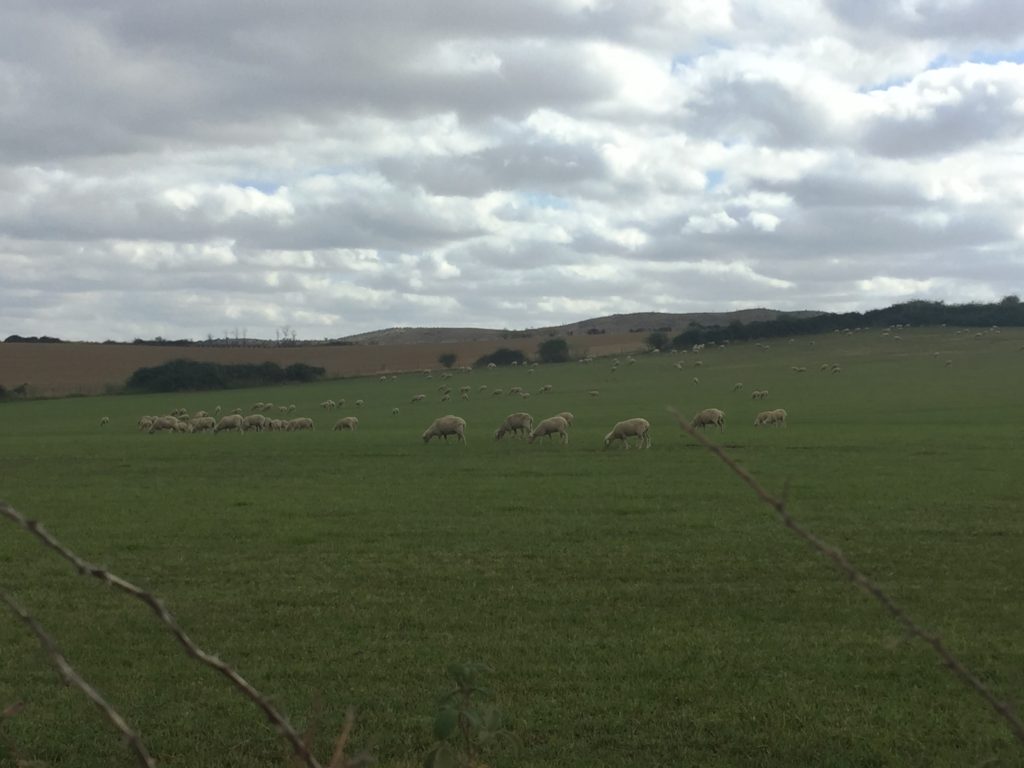
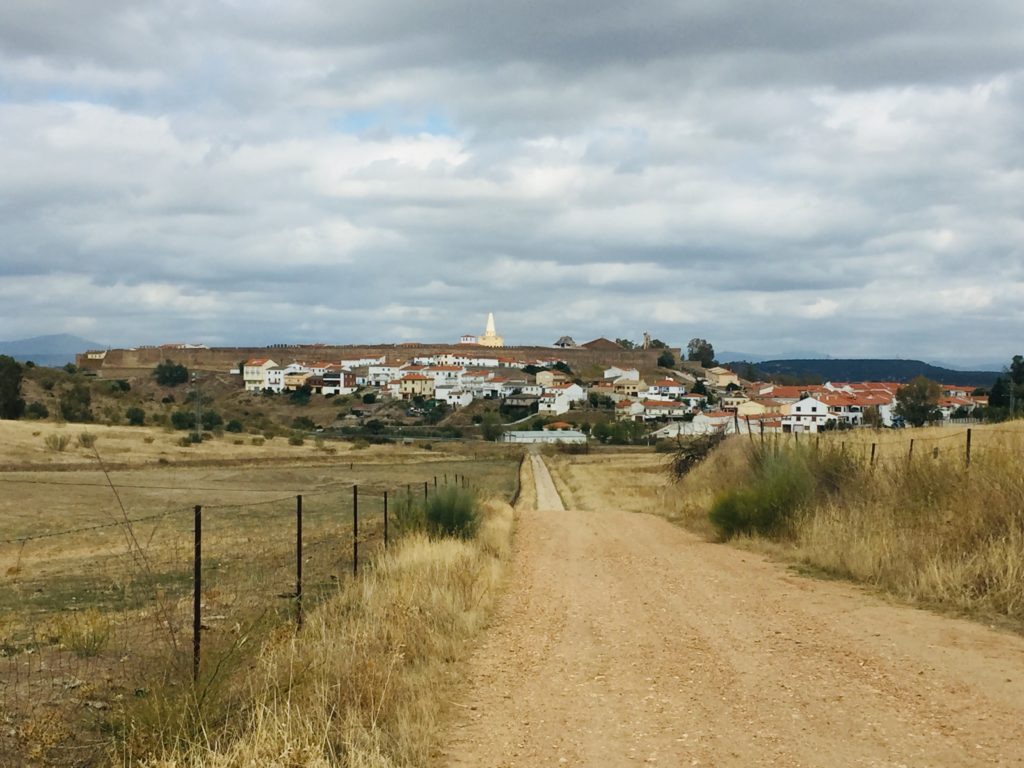
I started my walk the next day with Paul, and we picked up Daniel from Israel en route. As the three amigos, we ambled on through the thinly forested countryside of the province, discussing life, love, woke culture, football, and the idiosyncrasies of our fellow pilgrims. Paul had a particular issue with a Swiss-Hungarian couple he’d encountered on a few occasions. My main bugbears were the Italian couple who hogged the bathroom early in the morning and always complained about having to pay a voluntary donation to spend the night in an albergue. At least I’d lost those people somewhere before Caceras. The Swiss-Hungarian couple of Paul’s nightmares were on track to be in the same albergue as him by the end of the day.
I’d planned to stay in the walled town of Galisteo that night, a journey of about 28 KM from Canaveral, but Paul and Daniel encouraged me to join them and go another 10 KM to Carcaboso. It wasn’t quite 40 KM like the epic journey of the day before, but it wasn’t far off. I thought, what the hell. We stopped in Galisteo for lunch. We found a restaurant that was actually serving food when we showed up, so we couldn’t possibly turn down the opportunity to eat. The waiter didn’t bring what we ordered, but we ate what he brought anyway. We even found an open shop on a Sunday, so we bought as many provisions as our bags could hold and our backs could carry. Who knew how long it would be before we found another place that sold food.
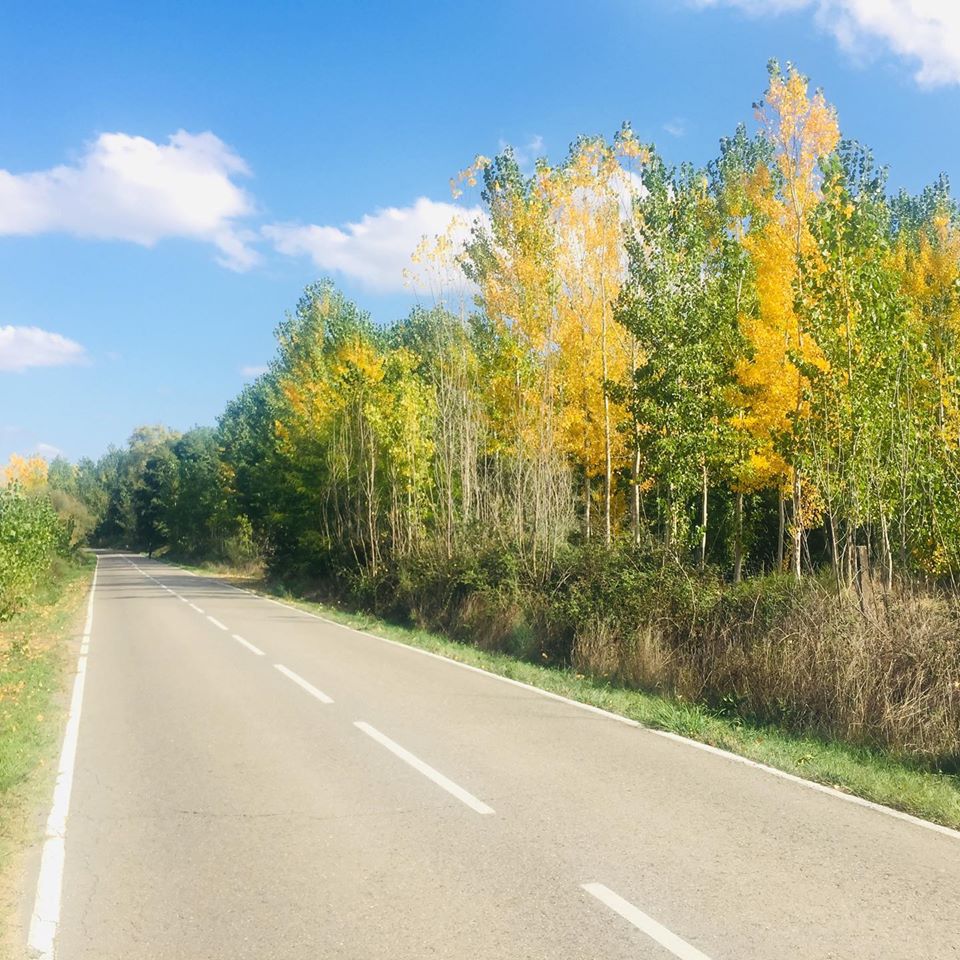
The landscape changed very dramatically around Galisteo. The scorched brown earth and desert vegetation gave way to much lusher pastoral lands. The only greenery I had seen along this route to date were the dark and hostile hues of trees and shrubs that had adapted to the harsh, arid climate of western Iberia. Now, all of a sudden I was in a verdant technicolour land, teeming with life and vitality. Obviously these parts got their fair share of a type of weather I hadn’t seen since I life home – rain. I completed the last 10 KM of that day by myself. I am by nature a fast walker, so I’ll always have to part company with my travelling companions for a while if I want to walk at my normal pace. Walking fast may consume more energy than a more leisurely pace, but the pulsating energy of a quick rhythm always gives me sufficient surges of adrenalin to get me to my destination. I needed my body to work overtime to complete what was effectively two marathons in two days. As with the previous day’s epic journey, I felt exhilarated when I got to my home for the evening. I had passed through the pain barrier by the time I got to Carcaboso, but I also had to wash the blood out of my socks. Such is the life of a pilgrim.
Carcaboso was a nondescript place, but the albergue was comfortable and airy. The Swiss-Hungarian couple arrived at the same time as me, and Daniel got there a little later. When Paul arrived and saw that the Swiss-Hungarians were there he decided to tear off for the next albergue, some 20 KM away. Where he actually stayed that night remains one of the great mysteries of the camino as, sadly, I never saw him again. I heard from a reliable source that he completed the full camino, having done several days of 60 KM, and he thawed in his attitude to the Swiss-Hungarians to the extent that they became his travelling companions. The Via de la Plata certainly attracts the lunatic fringe of the camino, and there were few crazier than Paul.
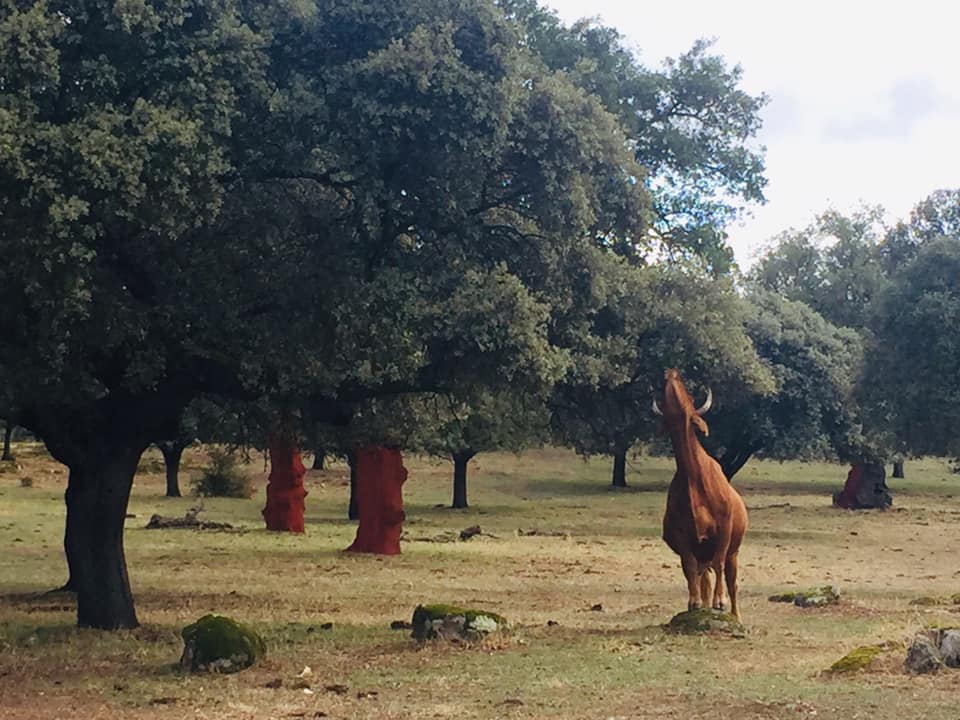
Two days of 40 KM and the threat of an impending storm were all the reasons I needed to take a shorter walk the next day. 20 KM away, although it involved a detour from the camino, was an albergue in a town called Oliva de Plasencia. That would have to do for the night. As I was about to leave Carcaboso I heard this albergue was closed. The next nearest, which also involved a detour, was 29 KM away. Other than that, the only option was to go 38 KM. Did I have it in me to do another marathon? I would see where the mood would take me. The rains stayed at bay as I headed out into the wilderness that morning. Much of the early part of the day veered through pastureland, where I caught sight of a cow munching the leaves of a tree. It was a lovely stretch of countryside, with no traffic or houses to interrupt the serenity. Serendipitously, I met Tony and Janell from California, who had become my first camino friends on the day I left Seville. They had endured a few injuries and nasty cases of blisters since we’d last met, so they took a few days off and then took the bus to make up time.
The rains stayed away, filling me with a false sense of confidence as I progressed through the lonely meadows of northern Extremadura. Today would be my final full day in that province. My experiences there had proved to be far more rewarding than I’d anticipated. The horrors of isolation that I’d expected never materialised. Extremadura proved to be a land of desolate beauty, ideal for walking, contemplating and learning to be patient when shops or restaurants don’t open at the times you want. It’s also a land rich in history, as the cities of Merida and Caceres attest, and that day I passed the roman ruins in Capara, whose monumental stone arch is among the most iconic human constructions on this camino. That was the only sign of life on this stage, and no one had really lived in these parts for thousands of years anyway.
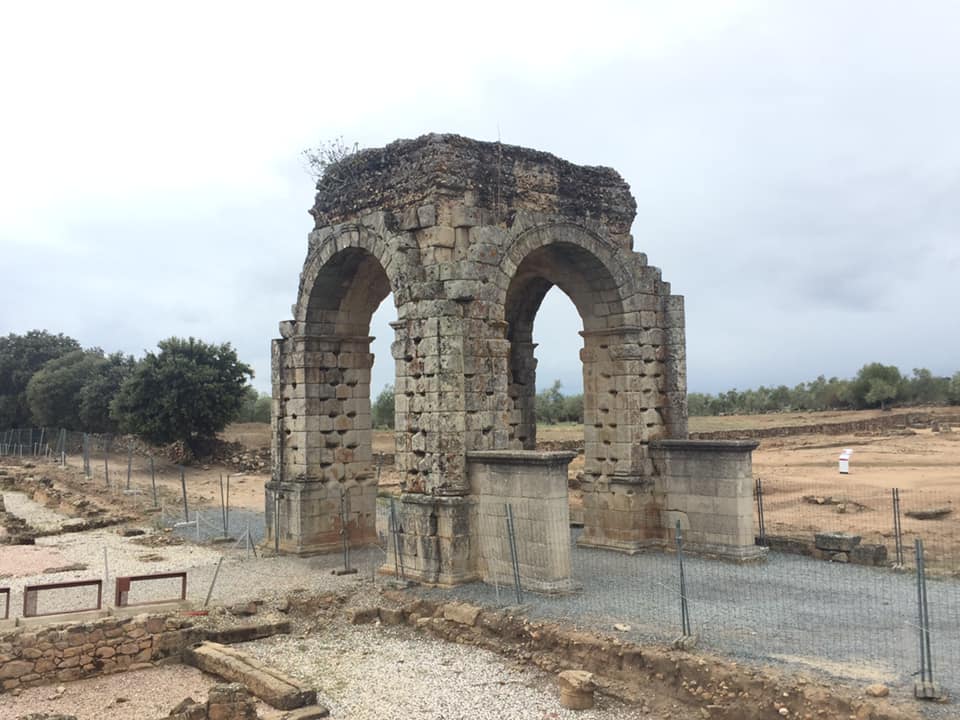
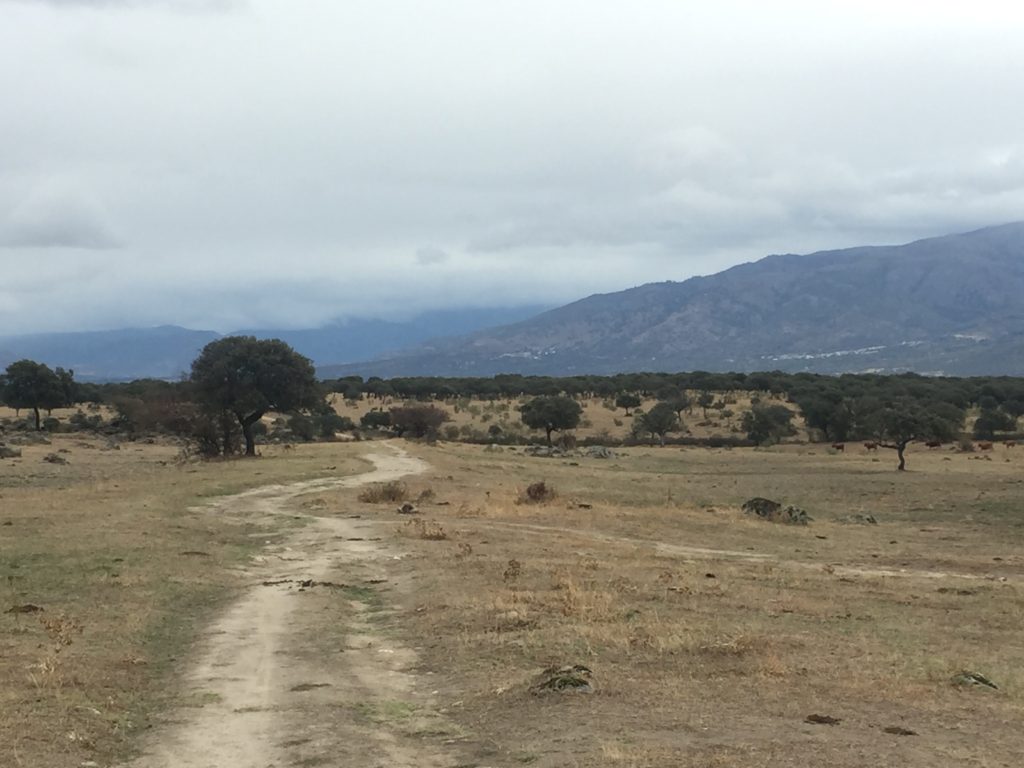
If I hoped that the rains would generously pass me by and allow me to complete that day without getting a soaking I was wrong. At first the rains came as a gentle shower, then the gods turned up the volume. Judging by the parched earth and scrawny plant life, it looked like it could do with a good dose of rain. It’s just that I didn’t want to be there when it happened. The showers came in waves, some light, some heavier. To a seasoned Irishman they wouldn’t normally merit the raising of an umbrella, but I’d been in dry, sunny Spain for enough time now to forget what precipitation was like, and I didn’t really care to be reminded on this day. By the time I reached the turnoff to the nearest lodgings the rain had eased off a bit. So I had to decide if I wanted to walk just another 2.5 KM or over 11? The clouds above promised brighter times ahead, so I decided to go the whole 11 KM. By the time the day was over, this decision made my plight a punchline in the Universe’s joke.
The rain increased, and then decreased. My clothes would start to dry out and I would remove my rain coat, and then the rains would come again. I wandered up a narrow mountain path, which was being rapidly transformed into a muddy stream the further I progressed. I saw a town on a hill up ahead and hoped it might be Aldeanueva del Camino, my destination for the evening, but I hoped in vain. I knew I had a longer trek to endure. If walking by water is one of life’s most agreeable experiences then walking through water falls right at the other end of the pleasure spectrum. Today’s rain walking was becoming increasingly miserable. Not horrible. That’s a whole different level of misery, but this was still the most unpleasant day on this camino so far. The time was nearing 5 PM and I sensed I had to be near the town by this point. As luck would have it, the skies cleared up a little, but just as I was on the final stretch it bucketed down with fury and anger. The rain attacked me from all sides, soaking every sinew and fibre, and elevating my experience of the weather from miserable to horrible.
I trundled into the town, and sought out the first refuge I could find. I’d heard there was a cramped, pokey little place on the outskirts that was very basic, and should probably be avoided if there were other options available. By that point I would have slept under a bridge or in one of the welcoming cowsheds I had passed earlier in the day. As soon as I found the albergue I rushed inside with enthusiasm. Literally, it was a case of any port in a storm. There I was met by the tightfisted Italian couple, who I thought I’d managed to shake off before Caceres. The three of us had to share a room that wasn’t big enough for one. Not in Europe anyway. The woman still said nothing, while the man continued to moan about his travels and travails. He spoke nothing but Italian but I got the gist. Some days you’ve got to listen to thunder, and some days you’ve got to walk in the rain. It was just one of those days
Having completed my third marathon in as many days I set off to get something to eat. The local shop had a queue half a mile long. The shopkeeper was probably also the local politician and fixer, as she took about fifteen minutes to deal with each customer. I assumed she was sorting out marital problems and parking fines as well as selling jamon. It took about three hours for me to buy the only loaf of bread in the shop. Then it was time for dinner. The local cafe didn’t serve food. Of course it didn’t. They said try the restaurant. That was closed for the holidays. What holidays were these? The feast of closed Spanish restaurants? Someone told me there was another restaurant about another kilometre down the road. I’d already walked 40 KM. What would one more do to me? I got to that restaurant at 7 PM. It was open, but not serving until 8:30. I would gladly have skinned and devoured a couple of hungry rats at that stage. I couldn’t wait an hour and a half. I decided to keep on walking. I needed fuel and the only thing that was sustaining me was the hope that there would be something up ahead. I saw flickers of neon in the distance. I followed it. It was a truck stop. It sold food. If the Universe likes to toy with you, it always provides too. I ate. It wasn’t good. Or value for money. But the place was open, and sometimes that’s good enough.
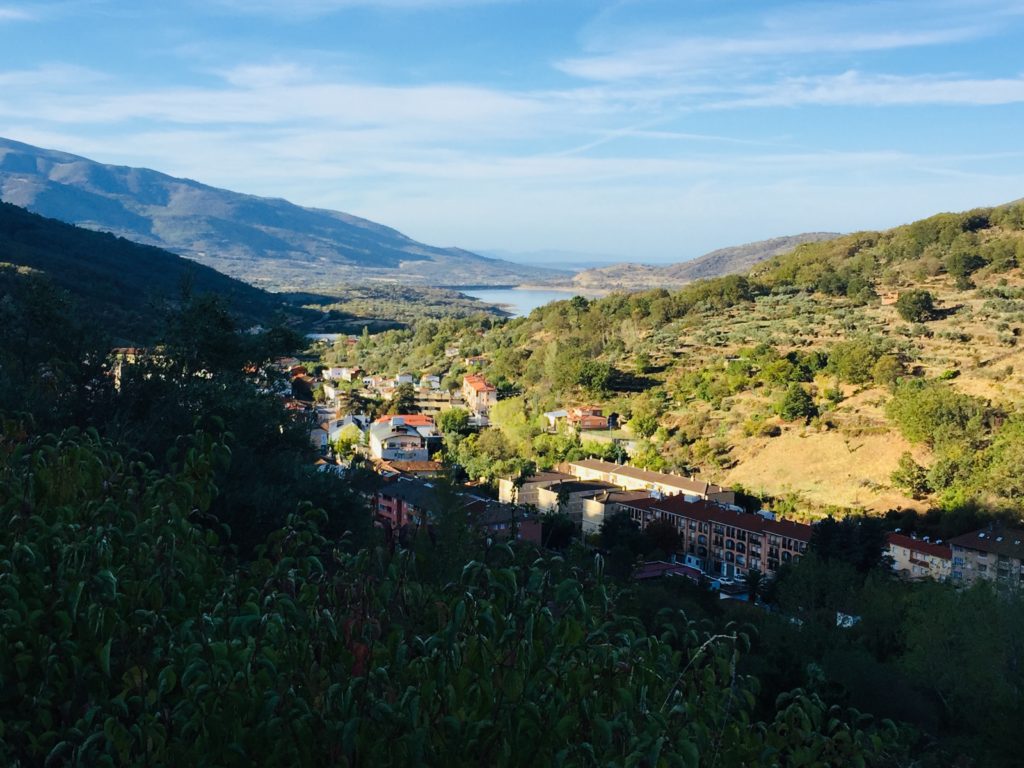
Just seven days since I had endured temperatures of more that 30 degrees in Merida, I was now starting out in morning temperatures that barely reached double figures. The northern stretches of Extremadura were more forested and mountainous, indicating that we were reaching the border with Castilla Y Leon. The final walk out of the province involved a sharp ascent of 200 metres in 2.9 KM, a reminder that Extremadura means extra hard. My 12 days in these parts was extra hard and extra challenging, but extra rewarding and extra memorable too. The long days in Extremadura would leave lasting memories, and provide another unique chapter of my camino experiences. Now it was on to Castilla Y Leon, the largest province in Spain, the home of the plains, and the real heart of the country. A whole new adventure was about to begin.
Nice
Thank you for for sharing your journey on the camino Del plata
I’m looking forward to hear more about the rest of your adventures
This has been a great read so far, can’t wait for part 3. How can I be informed when part 3 is available to read??
Hi Jason. If you like my FB or Instagram page, I’ll post as soon as the next instalment is ready. Buen Camino. John
Such a great read, I enjoyed your style very much. It brought my memories from the Via in the fall of 2017, and the way you described your experience – it sounded so much like my observations. Can’t wait to read more.
Oh, I met Max, young man with guitar as well as the female pilgrim who sang opera to help finance
het pilgrimage. Both 2 lovely pilgrims. Thank you for sharing.
Once again, a great story well written John. Looking forward to #3.
Hola John,
I have found, for me, that the first night meeting in an Albergue, “seals the deal” as far as Camino Karma and making a global friendship that lasts. For our 3rd Camino and the Via de La Plata, you were it…. we tanked the 2nd Day and had to regroup… but somewhere in Extramedera in a cork forest.. we ran into you on the path…it was weeks since our first meeting where we sat on the rooftop watching our laundry dry and telling our stories. You had just endured the 40 plus k day… we took a picture and you moved on. The next time, we ran into you in some town and shared another late night (after 7:30 or 8) meal, and finally walking around the very bustling town of Salamanca, we passed each other and shared our greetings in the rain.. I have a picture which I will send.
We took the Frances route at the “fork in he road” after meeting up with our first Camino son, Ricky from Bristol in Zamora. Got Caught up in some bad snow storms in the Cantabrians but met up with fun pilgrims from Germany, Korea, Pamplona and Ireland. Love you Irishmen… humor can.t be topped. This group got us oldies into Santiago.. laughing all the way.
Your blog is so well written and entertaining.. we were honored to be mentioned.. it gives ,me back that incredible, difficult journey which I am still processing. Thank you: John.
Thank you so much, Janell and Tony. It was really great to meet you both too. I hope all is well in California during these strange times. There won’t be any caminos for a while, unfortunately, but we all have plenty of good memories to keep us going. I’m working on the next instalment of my Via de la Plata blog. Hopefully I’ll have it ready in the next week or two. Do take care, and we’ll be in touch. Buen camino. John
Well, that was quite an entertaining read! Can’t say I agree as to it being hard and perilous at times, having walked the Via de la Plata as our first camino. We found it quite do-able, albeit some days were long by necessity. So yes, agreed with the longer distances, and sometimes quite boring stretches, and the absolute beautiful country side, being green or brown, parched or lush, populated or not. All in, thanks for an entertaining read, looking forward to stage 3. Not being able to walk ourselves currently, we live the camino life through your story. Muchas Gracias.
OH, and haha, we all meet the equivalent of the Italian couple, and become camino friends with them. 🙂